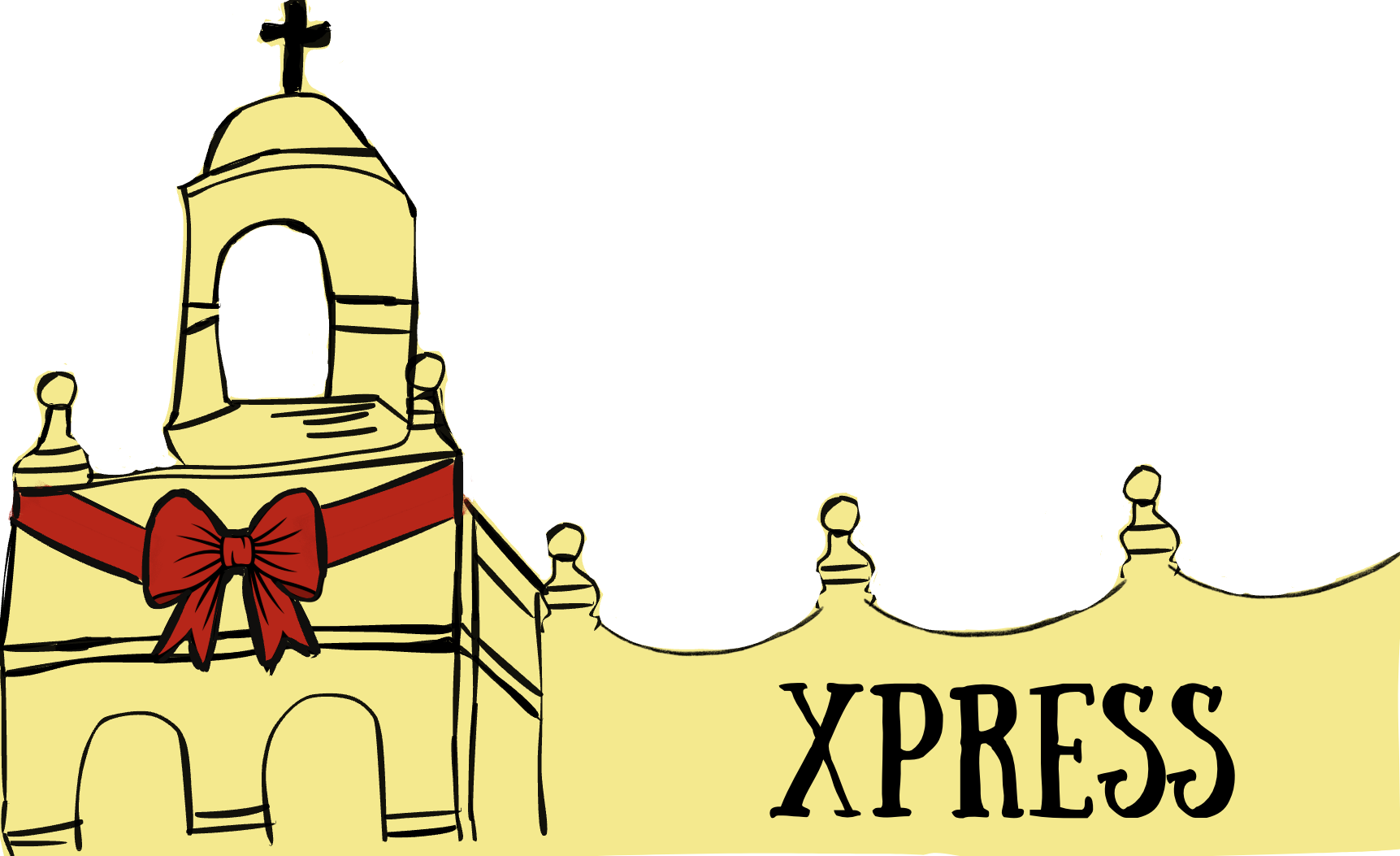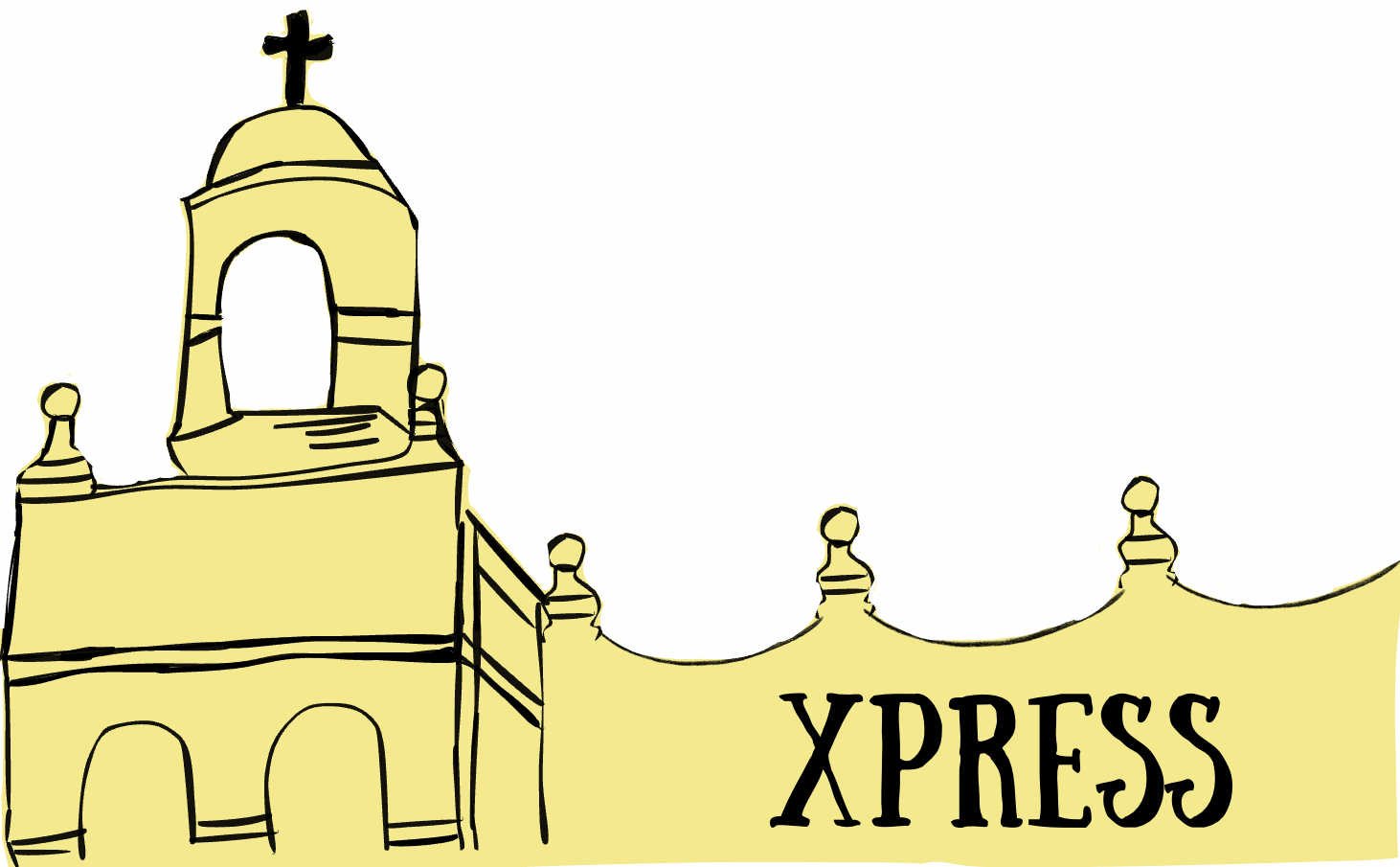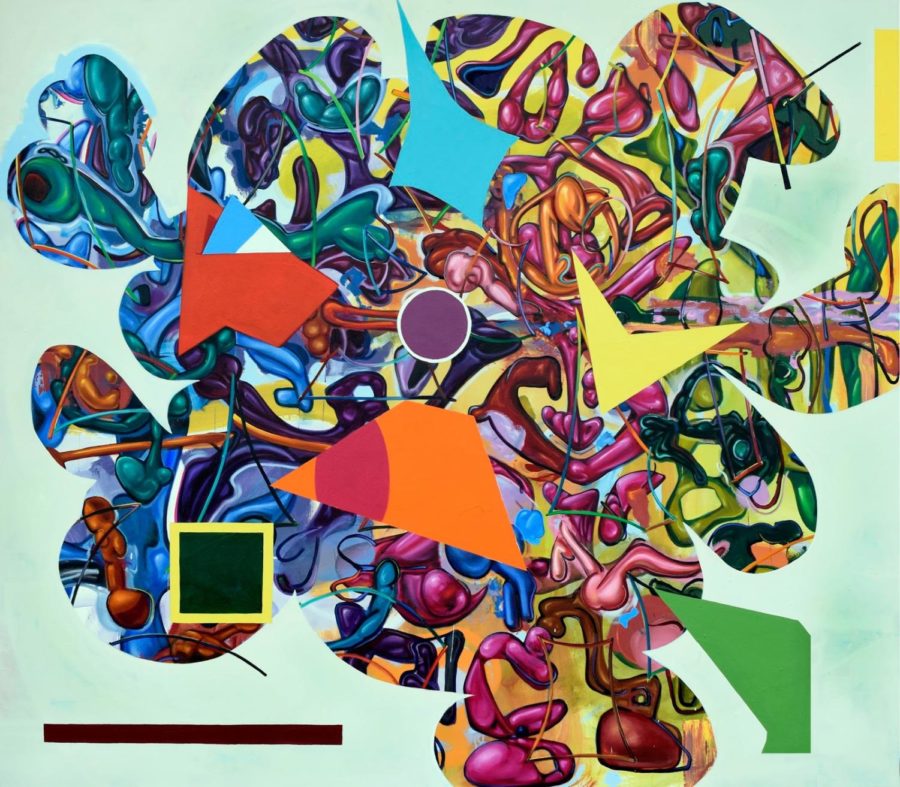Stark Gallery: 10 questions with William Anthony Dambrova
Latest from the Stark Gallery: 10 Questions with William Anthony Dambrova
The most recent Stark exhibit features the abstract work of artist Bill Dambrova. Upon entering the gallery, one is immediately struck by the vibrancy of the colors, and immersed by the explosion of shape and design. Dambrova’s work invokes contemplation of the veins of existence pulsating around and within us. Below, a profile of the artist who brought a celebration of life to our very own campus.
Born: Scottsdale, Arizona
Title of collection on display: Get ‘Em Into Those Bodies
Q1: What aspects of being a professional artist have surprised you?
“The main reason I love being an artist is for the surprises. I keep surprising myself that I can continually make new paintings with new imagery that keeps my interest and leads to another painting and then another. I can honestly say that what surprised me about being an artist is that it never stops being a magical experience.”
Q2: Who/what are your biggest influences?
“In general I’m influenced by the Mystery of existence and the invisible Life Force that animates the world and everything in it.”
Q3: What inspired you to/got you interested in emulating the “visceral qualities of our biological existence?”
“When I was just learning about art in college I started looking at paintings by abstract artists like Philip Guston, Joan Michell, and especially Norman Bluhm. Their work was full of expressive vigorous marks and blobs of gooey colorful shapes that made me think of what I was imagining was going on inside my own body… weird tubes and veins and arteries and gurgling liquids… It’s like our bodies and our artwork are both expressions of the divine. When I make a painting I like to feel like I’m tapping into the life force itself.”
Q4: What do you find most challenging about your work as an artist? What do you find most rewarding?
“I find the challenges to BE the most rewarding. If things get too easy I tend to figure out a way to make it into a challenge so that I can learn from the experience.”
Q5: How did you go about pursuing a career in art?
“Once I started taking classes at Glendale Community College… I made my first abstract painting I was hooked. After graduating from ASU I didn’t have any idea how to be a professional artist. All I knew was that I wanted to be around art so I became a security guard at the Phoenix Art Museum. My real education about how the art world worked began there. Two years later I became an exhibit designer at the Heard Museum and then I started working at major museums across the country as a designer. While working at all of these museums I met and worked closely with many famous and amazing artists from all over the world… I got a glimpse into the artist’s lifestyle. From the age of 23 till 37 I was a full time exhibit designer making art whenever I could and showing occasionally in group shows in Phoenix and Los Angeles where I lived for a while. I moved back to Phoenix in 2013 and decided to be a full-time artist and do the design work on the side.
A huge boost was having one of my paintings hanging at the Phoenix Art Museum where I started as a guard.”
Q6: How would you advise an aspiring artist at Xavier?
“There are so many types of artists and approaches to art making and art sharing that my general/generic advice to anyone making art is to enjoy the process. If you love what you do all the success that you want will follow. Take as much time as you need to find a way of making art/ selling art (whatever) that is enjoyable and rewarding to you. We are in an age where people are constantly innovating and coming up with new ways to be artists and get their work out there (remember we are artists we like to break rules). Once you unlock that level it’s really magic. It took me 20 years but totally worth it that I never gave up.”
Q7: If you weren’t an artist, what would you be?
“A Park Ranger. I love nature.”
Q8: What routines or rituals do you use to get yourself in the creative mindset?
“When I had to paint in my apartment I used to have a ritual that would convert the bedroom to a studio (at least in my mind). I would light some cedar incense and listen to live eclectic radio stations on the internet. Listening to live radio with live DJs in other big art cities… I could imagine all of the artists and creative people in their studios listening at the same time as me which made me feel like we were all doing this art thing for a reason and that it is important. I still do it now though I have a dedicated studio. I love Henry Rollins’ show and Iggy Pop’s.”
Q9: Do you ever face lapses of inspiration, and, if so, what actions do you take?
“I’m with artist Chuck Close that said “Inspiration is for amateurs. The rest of us just show up and get to work.” If I just finish a huge binge of weeks working late in the studio and finish a bunch of new work I will actually have to force myself to take a short break to relax and reflect on what I’ve done so that I don’t burn out.”
Q10: What advice do you wish you could give your younger self?
“Trust in your imagination and trust in your own images. This means don’t stress too much about what you are making and whether its new enough or relevant enough and don’t worry if there is a chance it has been done before or if someone else has already done it. Just make the work better and better and get it out there.”




